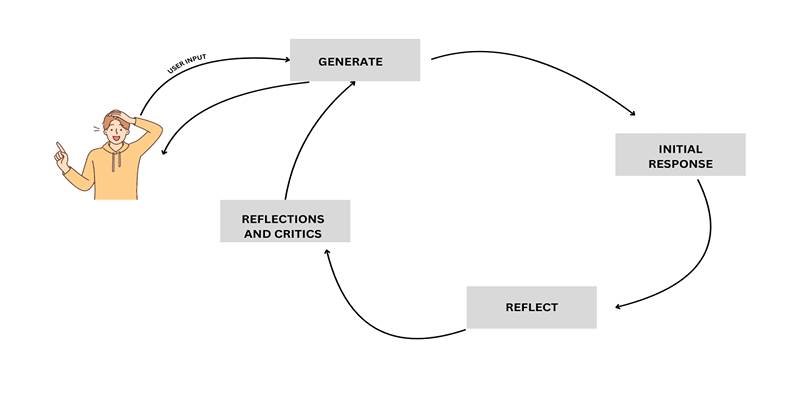Conversational AI has become the top voice for businesses in 2025. Its ability to quickly respond to customers and tackle a large number of calls at once is unmatchable. But conversational AI is not just for answering calls or solving general queries; it is improving for multiple other tasks. It is incorporating other technologies to help businesses in all possible ways. So, in this article, we will discuss the top conversational AI trends to watch in 2025 and how they’re shaping the future of customer communication.
What is Conversational AI?
Conversational AI is a technology through which machines respond to humans. It uses technologies like Natural Language Processing (NLP), Machine Learning (ML), and Automatic Speech Recognition (ASR) to understand, process, and respond to human language. There are many examples of conversational AI, such as Siri, Alexa, and advanced chatbots. They can easily handle and respond to the toughest human queries. They can even engage in small talk, exactly like human communication.
Similarly, businesses are using conversational AI for customer service. It gives instant responses and resolves customers' common queries without the help of human agents. In this way, businesses save a lot of money that could be spent on hiring a customer support team. Beyond this, sales increase because customers gain trust and loyalty in the company.
A report from MarketsandMarkets says that the conversational AI market, worth $13. 2 billion in 2024, is expected to grow to $49. 9 billion by 2030, at 24.9% annually.

Top 5 Conversational AI trends for 2025
Hyper-personalization
AI is getting smarter at understanding users. It remembers past chats and responds, helping businesses and customers get the products they need.
Multimodal conversations
Back in the day, AI was only limited to text. But now, voice conversational AI is becoming more popular. It now supports voice, video, and even gestures. Through this, communication becomes easy and natural.
Self-Learning AI
New AI systems do not need manual updates. They learn from the data and modify it according to ongoing trends, allowing them to keep pace with the market.
API-Driven transactions
Conversational AI is not just for answering questions. Now, you can process orders, book appointments, and manage accounts with it directly in chat apps.
Emotional intelligence in AI
AI is learning to recognize emotions and respond empathetically. This is useful for customer service, mental health support, and more human-like interactions.
The future of Conversational AI beyond 2025
The use of conversational AI in businesses and industries is increasing daily. But it is expected to grow even more in the future. Here are some of the possibilities for the future:
- Quantum AI advancements: With quantum computing, AI could process massive amounts of data instantly, leading to faster, more precise interactions and predictions.
- Expanding language support: AI continues to understand more languages, which can be helpful for many people. This makes worldwide communication easy and smooth.
- AI in creativity: Conversational AI may play a role in writing and composing music. It works alongside humans to increase creative processes.

Challenges in conversational AI
Like every other thing, conversational AI also has some drawbacks. Businesses should know their challenges so that they can handle them easily. Here are some of the challenges explained below:
- Difficulties with integration: Many companies find it difficult to integrate AI with their current tools, such as social media, CRM, and business software. This slows down the adoption rate.
- Bias in AI responses: AI learns from data, and if that data contains biases, the AI may give unfair or inappropriate answers. This can harm users' trust.
- Privacy and security risks: People are concerned about how the data they give to AI is stored and used. Some precautionary measures should be taken. Businesses must follow laws like GDPR to keep customer data safe.
- High costs: Maintaining AI systems requires money. However, they are worth the money based on their features and benefits.
Being transparent: Users should always know when they are talking to AI and how their data is used. Transparency helps build trust.
- Accessibility: Conversational AI should be designed for everyone, including people with disabilities or limited access to technology.
What is the AI agent trend in 2025?
In 2025, AI agents are becoming one of the most powerful technologies, marking the beginning of what experts call the "agentic era." This is expected to grow more in the coming years. A major development in the AI is multi-agent collaboration. Through this, many AI systems work together and increase the performance of any task. Moreover, these AI agents can now handle more tasks independently with this feature. For example, they can make a schedule, write software, and make reservations. This does not stop here; many new advancements are expected.
Final words
Conversational AI will be revolutionized in the coming years. It is shaping the future of businesses in every aspect. Even in today's world, conversational AI is helping businesses in unexpected ways. It understands customer's behavior and helps them to buy products according to their choice. Moreover, its multimode conversations are helping businesses to target a worldwide audience. The way it self-learns everything makes it seem that it will adopt new trends very quickly without any manual commands. There are some challenges, but they can be tackled with the right strategies. In summary, conversational AI will bring many more exciting opportunities to businesses in the future.
FAQs
- How does Conversational AI understand emotions in 2025?
AI is getting better at recognizing human emotions. It uses advanced language and sentiment analysis, which helps it respond more understandingly to customers.
- What is proactive Conversational AI?
Proactive AI starts conversations based on user behavior and real-time data. It can predict customer needs and make interactions smoother.
- What role does generative AI play in conversational systems?
Generative AI helps chatbots create smart and relevant responses instead of following a script, making conversations feel more natural.
- How is Conversational AI used with other technologies?
Conversational AI is combined with AR, VR, and smart software to create better user experiences, making AI more powerful for businesses and customers.











